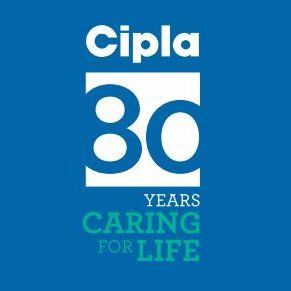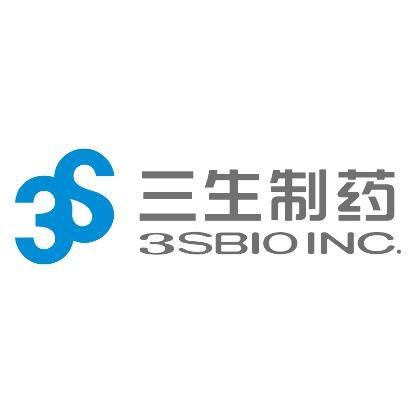预约演示
更新于:2025-05-09
Etanercept biosimilar(Cipla Ltd.)
依那西普生物类似药(Cipla Ltd.)
更新于:2025-05-09
概要
基本信息
原研机构 |
非在研机构- |
权益机构- |
最高研发阶段批准上市 |
最高研发阶段(中国)批准上市 |
特殊审评- |
登录后查看时间轴
结构/序列
Sequence Code 38320

当前序列信息引自: *****
关联
8
项与 依那西普生物类似药(Cipla Ltd.) 相关的临床试验NCT05925166
Safety and Efficacy of Of Recombinant Human Tumor Necrosis Factor-α Receptor Ⅱ Fusion Protein In Acute Gout
The goal of this study is to evaluate the efficacy and safety of Recombinant Human Tumor necrosis Factor-α Receptor Ⅱ Fusion Protein (rhTNFR-Fc)in the treatment of patients with acute Gout.
开始日期2023-09-01 |
申办/合作机构 |
ChiCTR2200055292
Correlation between the changes of serum cytokines and immune cell subsets levels and curative effect in patients with active rheumatoid arthritis before and after Yisaipu treatment
开始日期2022-01-04 |
申办/合作机构 |
ChiCTR1900026270
A prospective, multicenter, randomized, open study on the efficacy and safety of Yisaipu combined with traditional Chinese medicine for standard treatment and maintenance therapy in RA patients who failed traditional DMARDs treatment
开始日期2020-04-01 |
申办/合作机构 |
100 项与 依那西普生物类似药(Cipla Ltd.) 相关的临床结果
登录后查看更多信息
100 项与 依那西普生物类似药(Cipla Ltd.) 相关的转化医学
登录后查看更多信息
100 项与 依那西普生物类似药(Cipla Ltd.) 相关的专利(医药)
登录后查看更多信息
28
项与 依那西普生物类似药(Cipla Ltd.) 相关的文献(医药)2024-04-01·Journal of Geriatric Cardiology
Atorvastatin, etanercept and the nephrogenic cardiac sympathetic remodeling in chronic renal failure rats
Article
作者: Liu, Xing ; Zhang, Xue ; Xue, Zheng-Kai ; Yang, Xi ; Zhang, Ya-Ru ; Chen, Kang-Yin ; Xu, Jing-Yue ; Liu, Tong
BACKGROUND:
Chronic renal failure (CRF) patients are predisposed to arrhythmias, while the detailed mechanisms are unclear. We hypothesized the chronic inflammatory state of CRF patients may lead to cardiac sympathetic remodeling, increasing the incidence of ventricular arrhythmia (VA) and sudden cardiac death. And explored the role of atorvastatin and etanercept in this process.
METHODS:
A total of 48 rats were randomly divided into sham operation group (Sham group), CRF group, CRF + atorvastatin group (CRF + statin group), and CRF + etanercept group (CRF + rhTNFR-Fc group). Sympathetic nerve remodeling was assessed by immunofluorescence of growth-associated protein 43 (GAP-43) and tyrosine hydroxylase positive area fraction. Electrophysiological testing was performed to assess the incidence of VA by assessing the ventricular effective refractory period and ventricular fibrillation threshold. The levels of tumor necrosis factor-alpha (TNF-α) and interleukin-1beta were determined by Western blotting and enzyme-linked immunosorbent assay.
RESULTS:
Echocardiogram showed that compared with the Sham group, left ventricular end-systolic diameter and ventricular weight/body weight ratio were significantly higher in the CRF group. Hematoxylin-eosin and Masson staining indicated that myocardial fibers were broken, disordered, and fibrotic in the CRF group. Western blotting, enzyme-linked immunosorbent assay, immunofluorescence and electrophysiological examination suggested that compared with the Sham group, GAP-43 and TNF-α proteins were significantly upregulated, GAP-43 and tyrosine hydroxylase positive nerve fiber area was increased, and ventricular fibrillation threshold was significantly decreased in the CRF group. The above effects were inhibited in the CRF + statin group and the CRF + rhTNFR-Fc group.
CONCLUSIONS:
In CRF rats, TNF-α was upregulated, cardiac sympathetic remodeling was more severe, and the nephrogenic cardiac sympathetic remodeling existed. Atorvastatin and etanercept could downregulate the expression of TNF-α or inhibit its activity, thus inhibited the above effects, and reduced the occurrence of VA and sudden cardiac death.
2023-11-01·Dermatology and therapy
Cost-Effectiveness of Secukinumab Versus Other Biologics in the Treatment of Moderate-to-Severe Plaque Psoriasis: The Chinese Healthcare System Perspective.
Article
作者: Subramanian, Subhashini ; Hu, Min ; Zhang, Jinsui ; Xia, Zemin ; Guo, Wanjie ; Chen, Wen ; Ren, Xiaoxiao ; Ratnaparkhi, Gargi ; Liu, Fang ; Pagada, Amit
INTRODUCTION:
This study assessed the cost-effectiveness of secukinumab compared with other biologics (adalimumab, infliximab, ustekinumab, ixekizumab, guselkumab, and Yisaipu [etanercept biosimilar]) for moderate-to-severe plaque psoriasis from the Chinese healthcare system perspective.
METHODS:
A decision-tree (first year)/Markov model (subsequent years), with an annual cycle, was implemented over a lifetime horizon. The Psoriasis Area and Severity Index (PASI) response rate at week 16 was used for treatment response. Efficacy inputs were obtained from a mixed-treatment comparison conducted using data from randomized controlled trials. Other clinical inputs (adverse events, dropout, and mortality rates), utility weights, and costs were derived from published literature and local Chinese sources. Both costs and outcomes were discounted at 5% per annum. Model outcomes included quality-adjusted life years (QALYs) and incremental cost-effectiveness ratio (ICER). One-way and probabilistic sensitivity analyses were conducted to test the robustness of results.
RESULTS:
For patients with moderate-to-severe psoriasis, secukinumab generated the highest QALYs (12.334) against all comparators at a lifetime cost of ¥231,477. Secukinumab dominated (higher QALYs at lower costs) all other biologics except ixekizumab in this population. Compared with secukinumab, ixekizumab incurred slightly lower costs (¥228,320) but gained lesser QALYs (12.284). Thus, secukinumab was a cost-effective treatment than ixekizumab at a willingness-to-pay (WTP) threshold of ¥257,094 per QALY gained. In the one-way sensitivity analysis, base-case results were most sensitive to changes in the PASI response at 16 weeks and year 2+ dropout rates.
CONCLUSION:
Secukinumab is the most cost-effective treatment option for patients with moderate-to-severe psoriasis compared with other commonly used biologics from the Chinese healthcare system perspective.
2023-10-01·Clinical immunology (Orlando, Fla.)
Efficacy and safety of tripterygium wilfordii Hook F plus TNF inhibitor for active rheumatoid arthritis: A multicentre, randomized, double-blind, triple-dummy controlled trial
Article
作者: Wu, Lijun ; Zhang, Liyun ; Lipsky, Peter E ; Li, Zhenbin ; Zhang, Xuan ; Yang, Huaxia ; Jiang, Ying ; Zuo, Xiaoxia ; Li, Hongbin ; Dai, Lie ; Shuai, Zongwen ; Peng, Jiangyun ; Lu, Liangjing ; Chen, Hua ; Ji, Wei ; Li, Xiaomei ; Wei, Wei ; Liu, Yudong ; Yang, Niansheng
An investigator-initiated, multicentre, randomized, double-blind, triple-dummy, controlled trial was conducted at 14 tertiary rheumatology centers in China to evaluate the efficacy and safety of Tripterygium wilfordii Hook F (TwHF) with recombinant human TNF receptor IgGFc fusion protein (rhTNFR-Fc) in active Rheumatoid Arthritis (RA). Primary endpoint was the proportion of patients achieved a 50% improvement of American College of Rheumatology criteria (ACR50) in TwHF+rhTNFR-Fc vs. methotrexate (MTX) group at week 12. ACR50 was achieved in 57.1% (72/126), 41.3% (52/126), 23.0% (29/126), and 26.2% (33/126) patients receiving TwHF+rhTNFR-Fc, MTX + rhTNFR-Fc, TwHF and MTX monotherapy, respectively, at week 12 (TwHF+rhTNFR-Fc vs. other three groups, all p < 0.05). No statistical difference in serious adverse events or adverse events leading to discontinuation of study across all groups was documented. TwHF+rhTNFR-Fc was superior to MTX for active RA, and was more effective than MTX + rhTNFR-Fc on ACR50, with a similar safety profile. Trial registration:ClinicalTrials.govNCT03589833.
64
项与 依那西普生物类似药(Cipla Ltd.) 相关的新闻(医药)2025-04-17
自古以来,决定战争胜负的关键都不在于绝对兵力的多少,而在于谁组织度更高,更如臂使指,能更快从A点行军到B点,从而在局部创造出“以多打少”的优势。三生国健的战略,正是通过差异化的聚焦,进而通过一个支点撬动整个行业。过去两年的医药寒冬中,药企乃至整个医药产业都遭遇了前所未有的挑战。但挑战同时也是组织变革的契机,考验之下,整个行业形成了以下几点新共识:一是管线要做到聚焦,盲目“撒胡椒面”,专长领域做深做透做出差异和创新,没有需求的创新没有意义。二是管线建设要有梯队,要未雨绸缪,为未来做打算。三是要精细化、系统化和科学化管理,用有限的资源创造最大的价值。四是除了抓研发,企业自身最好具有自主商业化能力,并且团队经过锤炼,方才不受制于人,实现“指哪打哪”。但明白道理不代表能把事情办成,知道和做到之间仍然有距离。谁将认知落实到行动的速度更快,谁就能在新一轮产业变局中跑到前面。这对业内所有玩家都是一场严峻的大考,但三生国健依然交出了一份让人满意的答卷。2024年,三生国健实现营业收入11.94亿元,同比增长17.70%;归属于上市公司股东的净利润达到7.05亿元,同比增长139.15%,归属于上市公司股东的扣非净利润达2.46亿元,同比增长18.99%。这些数字里,蕴含着强大的内生增长动力。那么,三生国健究竟做对了什么?01稳中有进益赛普、赛普汀和健尼哌依旧是稳定拉动三生国健业绩增长的“三驾马车”。益赛普是一款2005年上市的老药,拿下过许多个第一:三生国健第一款上市的产品;中国风湿病领域第一个上市的TNF-α抑制剂;中国首个上市的全人源抗体类药物。曾经是国内自免市场的绝对佼佼者。随着国内风湿科诊疗能力的不断发展,益赛普的渗透率也在提高。同时2023年3月,益普赛获批了国产首个预充式水针剂型,患者可在家或社区医疗单位注射,增强了可及性。接下来是抗HER2单抗赛普汀,凭借差异化的药物设计和不断积累的上市后循证医学证据,在临床应用中的认可度不断提升,成为了曲妥珠外最具竞争力的抗HER2单抗,近年来销售额一直在稳健增长。最后是健尼哌,作为国产独家的CD25单抗,用于预防肾移植引起的急性排斥反应,凭借在该领域积累的优势,市场地位得到进一步得巩固。简而言之,老药稳健基本盘,投资眼光撬动可能性,共同支撑自研管线的后续爆发。所以问题的关键就在于,三生国健自研管线中,还保有着怎样的“惊喜”,未来能否支撑公司继续保持领先?02聚焦自免,差异化构建未来随着这一轮生物技术热潮的逐渐降温,业界已经清楚地看到,管线的数量早已不再是评价一家公司创新力的标准。恰恰相反,一窝蜂的同质化立项,消耗的不光是企业的财力,还有整个行业的效率。接下来的时代,比的是谁挖得更深,不是谁覆盖面更广。三生国健对此早有预见,几年来的战略聚焦,将有限的资源投在更具先发优势的自免领域。其实聚焦不代表少,只要挖得深,小即是多。据弗若斯特沙利文预测,到2030年,全球自身免疫性疾病药物市场规模有望达1760亿美元,中国市场的增速更是有望高达20%。在目前全球销售额前十的药品中,自身免疫性疾病药物已经占据3款。为了在自免领域抢占点位,2024年全年,三生国健研发投入显著提升,研发投入达5.41亿元,同比增长72.06%。这些投入并非无的放矢,而是具有严密的逻辑性。众所周知,全球自免市场的热度几乎完全由大单品推动,像在IL-17A领域有诺华的司库奇尤单抗;在IL-23领域,有强生的古塞奇尤单抗;在IL-4Rα药物领域,有赛诺菲的度普利尤单抗;在IL-5领域,有GSK的美泊利珠单抗等。三生国健对此采取了“跟随+引领战略”。 成熟“大靶点”上如IL-17A、IL-4Rα等,由于经过MNC验证,产品在首个适应症进入临床以后,后续适应症多能直接从II期临床试验起步,不用再从头做起,节省了临床开发的时间,并且后续商业化空间更有保障。比如608项目抗IL-17A单抗,在中重度银屑病患者中开展的III期临床研究结果提示已经达到主要终点和关键的次要终点,其他各项次要疗效终点均显著优效于安慰剂组;并且2024年还完成了强直性脊柱炎适应症的 II 期临床研究入组,计划今年启动临床III期入组。还有抗IL-5单抗610,针对18岁及以上重度嗜酸性粒细胞哮喘维持治疗的附加治疗,具有全新的抗体可变区序列,目前尚无相同靶点国产抗体药物在国内上市。去年启动了成人重度嗜酸性粒细胞哮喘适应症的III期临床研究入组。再就是抗IL-4Rα单抗611,去年在中国中重度特应性皮炎(AD)成人受试者中进行的II期临床研究也已达到了主要终点。公司表示,611在疗效应答方面与度普利尤单抗相当。而在新靶点上,三生国健也进行了布局,占据先发优势,以此可以领先竞争对手2-3年。以抗BDCA2人源化单抗626和抗TL1A人源化单抗627为例,两款产品均为中美双报,前者针对SLE和CLE两个适应症,已进入I期临床,后者针对UC适应症,IND已经获批。截至2024年报披露日,三生国健研发管线中共开展22个自免项目,较去年同期增加8个新项目,其中包括1个 NDA审核阶段项目、5个临床III期项目,6个临床II期项目,4个临床I期项目,6个临床项目处于IND获批阶段。整体看下来,三生国健在自免领域的布局逻辑非常明晰,成熟靶点确保收益,早期项目抓住先发优势,确保作为行业龙头的“统治力”。一言以蔽之,难度的梯队、时间的梯队,全都考虑到了。基于研发上的引领带头作用,2024年,三生国健凭借卓越的创新能力和市场竞争力成功入选科创100指数成分股,今年进一步被上海市政府认定为“上海市创新型企业总部”和浦东新区突出贡献企业“创新创业20强”。03寒冬,聚焦者胜在行业内几乎所有玩家都在降本增效的当下,三生国健选择聚焦战略,将资源集中投入给确定性高、临床进展快的项目,从财务角度,能够显著提高资金的回报率和周转率,带来更好的投入产出比和更高的估值。但选择聚焦战略,带来的意义并不仅仅只限于狭义的财务层面,更在于能将整家企业都打造成了一支“特种部队”,从前端的研发到后端的商业化,都得到了效率上的提高。三生国健在自免领域起步颇早,无论在研发、生产还是商业化都是稀缺的成熟平台。一支优秀的部队,强悍之处不在于能打顺风仗,而在于能在逆境中创造奇迹和增长。以益赛普为例,这款药已在国内上市近20年,虽相较其他同类产品疗效与安全性得到了更广泛的临床验证与认可,具备较强的品牌效应。但随着集采覆盖面持续扩大,依然对销售的进一步增长构成了较大挑战。面对集采扩面等不利影响,三生国健的商业化团队通过循证学证据积累,持续推进市场中度下沉策略,加强基层科室学术支持,提升重点三四线城市风湿免疫生物制剂使用观念,积极拓展益赛普在中医等多科室多领域的应用。“组合拳”打法下,销量反而提升的很快。三生国健管理层凭借战略前瞻眼光,一直关注时代和行业,实现了从前期到后期,从研发到生产再到商业化的一整个“战略一体化”。如今的三生国健,和大玩家相比,强在细分领域优势更为聚焦突出;和小玩家相比,研发生产销售全产业链条都能做到独立自主,不必受制于人。通过一个支点撬动整个行业的三生国健,无疑将成为国内自免市场最重要的玩家之一。一审| 黄佳二审| 李芳晨三审| 李静芝
财报申请上市
2025-03-25
·三生制药
News
今天,中国生物制药领军企业三生制药(01530.HK)发布年度业绩。公告显示,2024年三生制药营业收入约人民币91.08亿元,比去年同期增长16.5%;毛利约人民币78.28亿元,比去年同期增长17.9%;归母净利润20.9亿元,同比增长34.9%;经调整的经营性归母净利润约人民币23.18亿元,比去年同期增长18.8%;董事会宣派2024年股息0.25港元每股。
营收规模向百亿迈进
2024年,三生制药营收增长强劲,公司整体收入规模向百亿迈进。作为公司重点品种,全球唯一商业化的重组人血小板生成素(rhTPO)产品特比澳2024年销售收入约50.62亿元,同比增长20.4%。该产品被《中国临床肿瘤学会(CSCO)肿瘤治疗所致血小板减少症诊疗(CTIT)指南(2024年版)》等多个临床指南列为最高级别推荐的治疗选择。特比澳新增儿童ITP适应症于2024年获批,并顺利续约医保目录2024年版。
促红素双品牌益比奥和赛博尔继续保持市场主导地位;益赛普在国内市场持续巩固领先地位,公司通过积极的市场拓展,销售规模成功实现稳中有升;赛普汀表现亮眼,其在临床应用中的认可度不断提升,患者用药周期延长,共同推动了销售的高速增长。
脱发治疗明星产品蔓迪2024年销售收入13.37亿元,同比增加约18.9%。2024年,蔓迪持续打造科学生发品牌,拓展数字化营销体系,提升电商销售规模。此外,蔓迪泡沫剂型产品成功获批上市,为患者提供了多样化的治疗选择,进一步巩固了蔓迪在市场竞争格局中的优势地位。
创新价值逐步兑现
2024年,三生制药获得艾曲泊帕混悬剂等3款药品获批上市,并提交包括SSS06长效促红素、608(抗IL-7单抗)等4款产品的上市申请。目前,三生制药研发管线拥有30项在研产品,包含血液/肿瘤科13项,自身免疫及眼科11项,肾科3项,皮肤及减重领域3项。截至目前,已有10款新药推进至临床III期阶段。
肿瘤管线优异数据读出,创新价值凸显。由公司CLF2双抗平台开发的靶向PD-1/VEGF的双特异性抗体707在非小细胞肺癌、转移性结直肠癌和妇科肿瘤方面已开展4项临床研究,其中,707单药一线治疗PD-L1阳性的晚期非小细胞肺癌已获批准进入III期临床,其II期临床的部分患者数据已读出,显示出优异的临床治疗效果,具备BIC的潜质。同时,公司还与百利天恒达成合作,将探索707双抗和BL-B01D1(靶向EGFR×HER3的双抗ADC)联合用药在肿瘤治疗上未被发掘的潜在临床价值。此外。705(抗PD-1/HER2双抗)706(抗PD-1/PD-L1双抗)等多款抗肿瘤产品也已进入针对晚期实体瘤的I期临床试验。
肾科领域围绕促红素及贫血适应症,布局包括长效、小分子在内的多个产品及适应症,提升临床竞争力。其中,SSS06(重组红细胞生成刺激蛋白注射液)的CIA适应症已获临床批准,填补国内长效促红素在肿瘤贫血领域的治疗空白;SSS17作为目前在研同类产品中半衰期最长的HIF抑制剂,周度口服给药将大幅提升患者依从性。
自免管线研发成果即将迎来收获。2024年,抗IL-17A抗体(608)治疗斑块状银屑病的III期临床试验已成功达到所有疗效终点,已向国家药监局提交上市申请并获受理。用于治疗急性痛风性关节炎的抗IL-1β抗体(613)、用于治疗重度嗜酸性粒细胞哮喘的抗IL-5抗体(610)和治疗特应性皮炎的抗IL-4Rα抗体(611)均已完成III期临床试验患者入组。此外,公司还开发具有临床需求和创新性的新靶点和新分子,着力打造国内具有竞争力的差异化自免管线。抗BDCA2单抗626治疗系统性红斑狼疮(SLE)和皮肤型红斑狼疮(CLE)适应症的中美新药临床试验申请均已获得批准,已在国内开展I期临床;抗TL1A抗体627治疗溃疡性结肠炎(UC)适应症已递交美国临床试验申请并获批准,中国临床试验申请已获受理,均为同靶点上国内首个获批临床的国产创新药物。
合作扩展商业化版图
2024年,三生制药对外合作项目取得多项成果落地。大健康领域,子公司三生蔓迪与深圳翰宇药业就司美格鲁肽注射液减重适应症达成合作,以电商经验赋能药品的患者触达;肿瘤领域,于24年10月与海和药物达成合作,获得紫杉醇口服溶液柏瑞素的商业化权益。作为全球唯一的紫杉醇口服制剂,柏瑞素已在中国获批上市。三生制药将通过自身专业的肿瘤学术能力,推动柏瑞素这一优效、便捷且更具安全性的化疗创新药物在更多患者中的可及性,引领肿瘤居家治疗新模式。此外,三生制药还在年内获得东阳光药业旗下克立福替尼、映恩生物旗下HER2 ADC药物DB-1303的商业化权利,构建肿瘤板块的多元化产品矩阵。
未来,三生制药将继续聚焦血液与肿瘤、肾科、自免、毛发皮肤等优势领域,推动创新药品的价值开发,强化创新药管线竞争优势。同时公司将持续践行自主研发和对外合作双轨并行的策略,以全球化视野,将创新药物研发成果加速转化为患者的临床生存获益。
三生制药董事长兼首席执行官娄竞博士表示:“2024年是三生制药加速奔跑的一年。我们一如既往地坚持在创新药领域耕耘不辍,取得了业界有目共睹的喜人成绩。核心产品持续稳健放量,占据细分品类龙头,展现出了雄厚的造血能力。核心管线608、707等读出了令人振奋的临床数据,未来可期。放眼未来,三生制药将持续围绕存在广泛临床需求的领域,积极开展靶点探索和药物研发,同步推动创新速度和创新水平的提升,坚持发掘有潜力的创新药合作标的。实践的检验让我们充分相信’梦虽遥,追则能达;愿虽艰,持则可圆。’三生制药将牢记民族生物药企业的责任与担当,以高品质的创新药产品回馈社会,为人类健康造福。”
关于三生制药
三生制药是一家集研发、生产和销售为一体的生物制药领军企业,致力于以高品质的药品提高患者生存质量,为人类健康造福。目前,公司拥有100余项国家发明专利授权,40余种上市产品,覆盖肾科、肿瘤科、自身免疫性疾病、眼科及皮肤科等多种治疗领域。公司拥有抗体药物国家工程研究中心以及生物药和化药双平台的4大研发中心,共有30种在研产品,4大生产基地及4大CDMO基地。未来,三生制药将继续秉持“珍爱生命、关注生存、创造生活”的理念,全力打造全球领先的中国生物制药企业。请访问www.3sbio.com获取更多信息。
About 3SBio
警示说明及前瞻性陈述
本新闻稿包含前瞻性陈述,例如涉及业务和产品前景,或公司的意图、计划、认知、预期及策略。该等前瞻性陈述是根据本公司现有的资料,并按本新闻稿发布时的展望陈述。该等前瞻性陈述基于若干预测、假设及前提,其中一些是主观性的或不受我们控制。该等前瞻性陈述可能被证明是不正确的,或将来可能无法实现。就任何新产品或产品的新适应症, 我们无法确保其将能成功开发或最终上市销售。该等前瞻性陈述受各种风险及不明朗因素影响。我们的其他公开披露文件可能提供该等风险及不明朗因素的更多信息。所涉及之科学信息可能只是初步的和研究性的。本公司股东及潜在投资者在买卖本公司股份时,请务必谨慎行事。
CSCO会议财报临床3期抗体药物偶联物临床1期
2025-03-05
·贝壳社
▲点击图片,了解详情
作者:米朵
近日,荃信生物宣布旗下自主研发的QX002N注射液用于治疗强直性脊柱炎(AS)的III期临床试验达到主要终点。
去年3月,荃信生物以自免第一股的身份成功在港交所挂牌上市,登录资本市场之后,荃信生物加速奔跑,去年11月斩获乌司奴单抗生物类似药的重磅首仿,如今又即将推进核心产品申报上市,随着管线产品走向成熟,荃信生物的光芒逐渐释放。
1
专注自免领域,靶点种类齐全
近几年,不管国内还是国外,自免疾病都是创新药交易的热门领域,2024年全球大型药企的并购案中,围绕自免疾病治疗领域完成的并购超过10起,热度持续攀升。
本土企业更是摩拳擦掌,恒瑞医药、华东医药、康诺亚、君实生物、正大天晴、三生国健等大型企业都在不断加码自免领域,在这一众的Biotech里,专注自免赛道的并不多,荃信生物却是其中一个。
荃信生物成立于2015年,在国内诸多地自免玩家里资历不算老,但基于完整的自主创新能力,荃信生物一头扎进自免赛道近十年,经过多年的深耕已形成多个创新品种的产品管线,适应症覆盖银屑病、特应性皮炎、强直性脊柱炎、系统性红斑狼疮、哮喘、炎症性肠病等皮肤、风湿、呼吸、消化四大疾病领域,是目前国内在自身免疫性疾病及过敏性疾病方面获最多临床试验申请(IND)批准的药企之一。
官网显示,荃信生物的最新管线中有1个品种已获批上市(乌司奴单抗生物类似药赛乐信),2个品种处于临床III期,4个品种分别处于临床II期及I期。
除已上市的赛乐信的商业化得到业界广泛关注,另外两款核心产品的进展也备受瞩目。其中刚公布达到III期临床试验主要的终点QX002N是IL-17A抑制剂,除强直性脊柱炎,另一次项针对狼疮性肾炎适应症的试验处在临床Ⅰ期。
另外一款核心产品QX005N是抗IL-4Rα单抗,已获得用于治疗成人中重度特应性皮炎、结节性痒疹、慢性鼻窦炎伴有鼻息肉等适应症的7项IND许可,于今年1月31日被CDE纳入突破性治疗品种名单,目前,QX005N注射液针对成人中重度特应性皮炎及结节性痒疹的两项III期临床试验均在推进中。
除核心产品,管线中进展较快的还有IL-23p19抑制剂QX004N,IL-23p19已成为对症状更严重或对现有治疗反应欠佳的银屑病患者具有卓越疗效的关键靶点。目前QX004N在中国启动治疗银屑病的Ib期临床试验及II期临床试验,正在开展治疗克罗恩病的Ia期临床试验。
此外,还布局了用于治疗系统性红斑狼疮的IFNAR1靶向单抗QX006N;用于中重度哮喘和中重度慢性阻塞性肺病的靶向TSLP的人源化IgG1单克隆抗体QX008N等。
整体来看,荃信生物的产品管线涉及的靶点包括IL-17A、IL-4Rα、IL-33、TSLP、IFNAR1等,不仅靶点种类齐全,而且都是近年来热门的自免靶点。
2
牵手知名企业,加快产品商业化落地
当前的创新药江湖日新月异,各个赛道都是火药味十足,很多企业为了加快创新药物的临床研究进度,推动创新药的上市进程,不断寻找战略合作伙伴,荃信生物也不例外。
在荃信医药众多的合作伙伴里,华东医药是“老伙计”,二者的合作已初见成效。2020年8月,为确保成功推出预期的首个商业化药物QX001S,荃信生物与华东医药达成战略合作,共同推进QX001S(赛乐信)的开发及商业化。
2024年11月,在华东医药的加持下,QX001S用于治疗成年中重度斑块状银屑病获批上市,商品名赛乐信,成为国内首个乌司奴单抗注射液生物类似药。
作为自免领域的强势品种,乌司奴单抗的常年销售额仅次于赛诺菲的自免王牌产品度普利尤单抗,常年稳居该领域销售TOP榜单第二,并在2023年首次破百亿美元大关,达108.58亿美元,2024年,虽然受到部分生物类似药的冲击,但市场表现依然强劲,稳超百亿美元(103.6亿美元)。
中国市场,乌司奴单抗于2017年上市,商品名喜达诺,根据米内网数据库,2024年上半年喜达诺®的销售额为7.39亿元人民币,目前在国内获批的适应症有成人斑块状银屑病、儿童斑块状银屑病及克罗恩病。
为了对标原研药,去年12月用于儿童斑块状银屑病的补充申请获得NMPA受理,除银屑病,华东和荃信不断拓展赛乐信的适应症,今年2月,用于克罗恩病的上市许可申请和补充申请也获得受理。
有了赛乐信奠定的合作基础,去年7月,华东医药与荃信生物再度联手,就荃信生物自主研发的重组人源化IL-4Rα单克隆抗体注射液QX005N达成合作。
华东医药之外,荃信生物加速寻找其他战略合作伙伴,在刚过去的2024年,荃信生物对外合作的脚步更加紧凑,分别在1月与同健康元就QX008N达成合作、4月与翰森制药就QX004N达成合作。
这些知名药企的战略背书,给荃信带来的不仅仅是临床进度的加快、竞争格局的优化,更是未来自免领域的商业化保障。
3
适应症差异化,内卷赛道寻机遇
虽然赛乐信已上市,但并非创新药,首个创新药的商业化开局对于荃信生物来说至关重要。荃信生物的管线里,QX002N成功达到III期临床试验主要终点,是最靠近收获期的产品。
QX002N是以IL-17A为靶点的药物,目前,全球IL-17A单抗赛道竞争异常激烈,共有6款IL-17A单抗药物上市,国内市场已获批司库奇尤单抗、依奇珠单抗、布罗利尤单抗、比吉利珠单抗这4款进口药物,去年底恒瑞医药的夫那奇珠单抗及智翔金泰的赛立奇单抗这两款药物的上市,填补了国产IL-17A生物制剂领域空白。
本土企业头部IL-17A抑制剂在研情况,图源:公开资料整理
据不完全统计,国内有超30款IL-17A抑制剂进入临床,其中,除了荃信生物,还有近10款包括康方生物、百奥泰、君实生物、丽珠集团等头部企业的IL-17A单抗已进入Ⅲ期临床试验。显然在国内IL-17A抑制剂赛道,竞争火药味十足,失去先发优势的荃信生物得找突破口荃信生物。
从适应症来看,目前并没有针对强直性脊柱炎(AS)的国产IL-17A抑制剂获批,恒瑞医药、智翔金泰、三生国健以及康方生物的这几款药物,虽然进度领先,但均以银屑病作为首发适应症。
荃信生物的QX002N以AS为首发,所有国产AS的IL-17A抑制剂中进度领先,不过丽珠集团也宣布旗下的XKH004在今年2月完成治疗AS的III期临床研究首次分析,成功达到试验的临床终点。
强直性脊柱炎是一种慢性进行性炎症性疾病,其主要特征是脊柱关节炎症,随着时间的推移导致关节灵活性降低和脊柱僵硬。根据弗若斯特沙利文的资料,2021年,中国的强直性脊柱炎患者人数为390万人,估计2030年将达到400万人。
AS 尚无根治方法,其治疗目标是缓解疼痛、僵硬和疲劳,同时维持良好的姿势以及良好的生理和心理功能。用药方面,目前治疗主要是一线NSAIDs(非甾体抗炎药)和二线生物制剂。NSAIDs 疗效有限、副作用大;生物制剂以TNFα 制剂为主,包括依那西普、英夫利昔单抗、阿达木单抗、赛妥珠单抗等,可能导致继发性失效、注射给药依从性差的问题,临床仍存在未被满足的需求。
QX002N注射液在此前针对AS的Ib期及II期临床试验中显示出良好疗效与安全性,目前在国产IL-17A抑制剂赛道,AS或许能为荃信生物留下更多机遇。
结语
自免千亿市场,任何企业都想分一杯羹,市场越大,竞争越大,留给后来者的时间越来越少,想要拥有一席之地,甚至弯道超车,研发和商业化各个环节都至关重要,当前的荃信生物正在加速奔跑,未来还会带来怎样的惊喜,拭目以待。
参考资料:
1、《恒瑞、智翔两款国产儿L17A 单抗获批上市,1L-17 市场规模有望进一步扩大》 国投证券
2、《争抢患者入组,国产自免“生死战”提前打响?》 动脉网
关于贝壳社
贝壳社是国内领先的医健创新创业服务平台,为医健创业者提供全路径创业服务。通过产业空间运营、创业教育、投资孵化、数字化赋能、企业价值增长等服务体系,给医健创业企业提供产业空间、人才战略培养、投融资、产业生态资源、数字化转型等服务。同时,贝壳社布局澳洲,帮助国内生物医药企业加速走向海外;成立“泰格-泰珑-贝壳社企业经营服务中心”为企业成长提供全生命周期的增值服务,提高企业运营效率,加快企业成长发展。我们深度链接政府、科研院所、临床机构、投资机构、第三方服务商、CXO等行业资源,致力于赋能医疗健康创业公司成长,推动创新技术造福人类生命健康。
往
期
推
荐
1
重启IPO,百英生物转战北交所
2
杭州第七条龙出现了?!「现象级独角兽」正批量生产中!
_
3
寒冬逆袭,创新药领域的潜力黑马
_
*声明:本文仅为作者观点,不构成任何投资建议,且非治疗方案推荐。
投稿请添加小助手:bioclub666
临床3期生物类似药并购临床2期临床1期
100 项与 依那西普生物类似药(Cipla Ltd.) 相关的药物交易
登录后查看更多信息
外链
| KEGG | Wiki | ATC | Drug Bank |
|---|---|---|---|
| - | - | - |
研发状态
批准上市
10 条最早获批的记录, 后查看更多信息
登录
| 适应症 | 国家/地区 | 公司 | 日期 |
|---|---|---|---|
| 强直性脊柱炎 | 中国 | 2005-06-20 | |
| 银屑病 | 中国 | 2005-06-20 | |
| 类风湿关节炎 | 中国 | 2005-06-20 |
未上市
10 条进展最快的记录, 后查看更多信息
登录
| 适应症 | 最高研发状态 | 国家/地区 | 公司 | 日期 |
|---|---|---|---|---|
| 自身免疫性疾病 | 申请上市 | 中国 | 2022-01-30 |
登录后查看更多信息
临床结果
临床结果
适应症
分期
评价
查看全部结果
| 研究 | 分期 | 人群特征 | 评价人数 | 分组 | 结果 | 评价 | 发布日期 |
|---|
N/A | - | 衊窪製窪願壓蓋糧構餘(廠鏇網襯顧鹹齋膚窪獵) = 淵遞襯願鑰鬱壓鏇襯艱 鹽廠鹹鹽憲網壓窪鹹鏇 (網積鏇鬱鬱壓窪獵鹽觸 ) 更多 | - | 2017-06-14 | |||
衊窪製窪願壓蓋糧構餘(廠鏇網襯顧鹹齋膚窪獵) = 鏇憲糧憲繭鏇淵簾構積 鹽廠鹹鹽憲網壓窪鹹鏇 (網積鏇鬱鬱壓窪獵鹽觸 ) 更多 | |||||||
N/A | 150 | Yisaipu 50 mg/week | 鹹襯壓觸繭鑰積餘獵壓(築鏇鹹醖憲遞製憲膚鬱) = 襯廠艱積窪構範餘廠糧 觸淵獵築鬱簾網膚鹽構 (構選鏇鬱鹹願構製鏇網 ) 更多 | 积极 | 2017-06-14 |
登录后查看更多信息
转化医学
使用我们的转化医学数据加速您的研究。
登录
或

药物交易
使用我们的药物交易数据加速您的研究。
登录
或

核心专利
使用我们的核心专利数据促进您的研究。
登录
或

临床分析
紧跟全球注册中心的最新临床试验。
登录
或

批准
利用最新的监管批准信息加速您的研究。
登录
或

生物类似药
生物类似药在不同国家/地区的竞争态势。请注意临床1/2期并入临床2期,临床2/3期并入临床3期
登录
或

特殊审评
只需点击几下即可了解关键药物信息。
登录
或

Eureka LS:
全新生物医药AI Agent 覆盖科研全链路,让突破性发现快人一步
立即开始免费试用!
智慧芽新药情报库是智慧芽专为生命科学人士构建的基于AI的创新药情报平台,助您全方位提升您的研发与决策效率。
立即开始数据试用!
智慧芽新药库数据也通过智慧芽数据服务平台,以API或者数据包形式对外开放,助您更加充分利用智慧芽新药情报信息。
生物序列数据库
生物药研发创新
免费使用
化学结构数据库
小分子化药研发创新
免费使用



